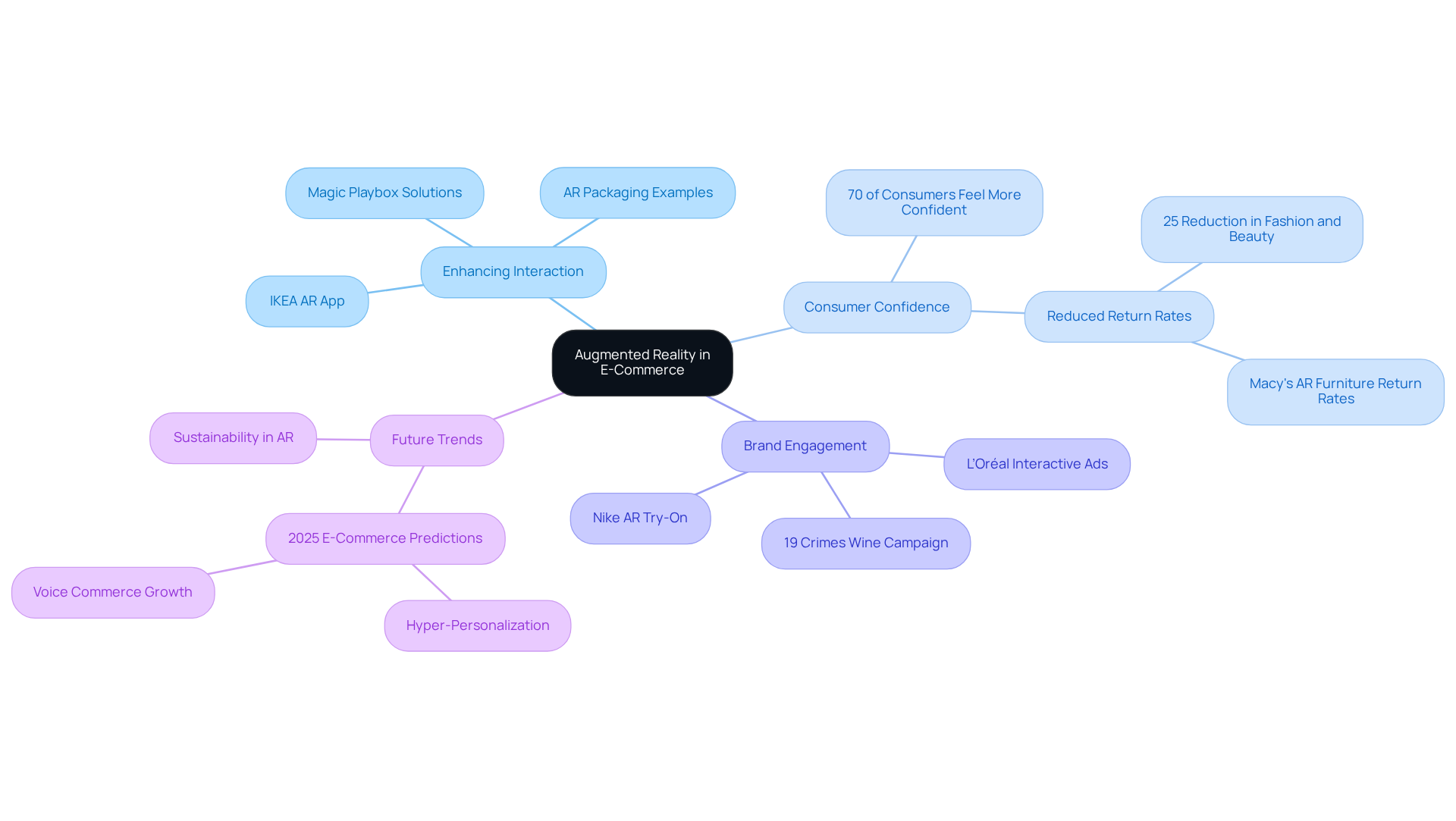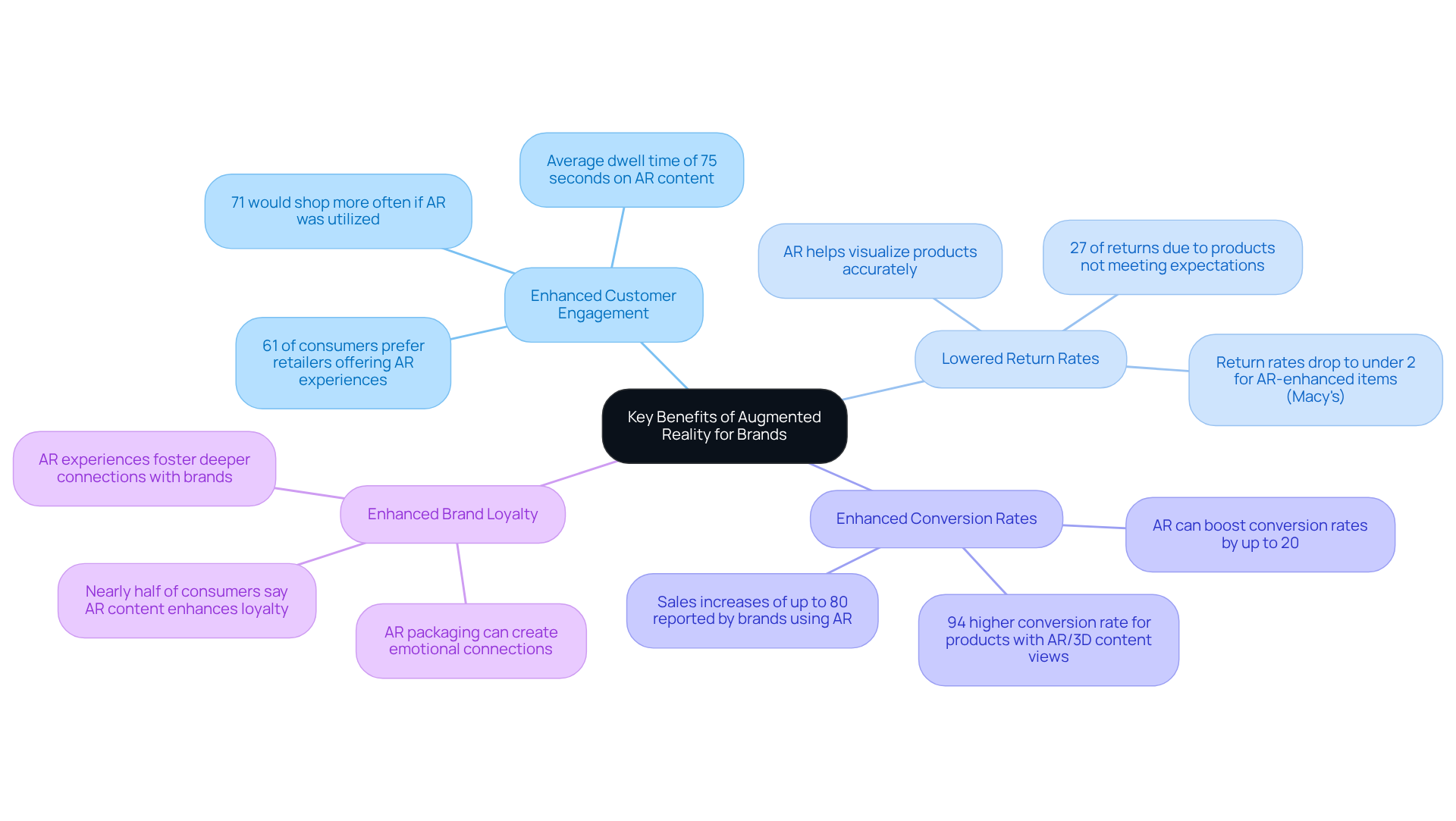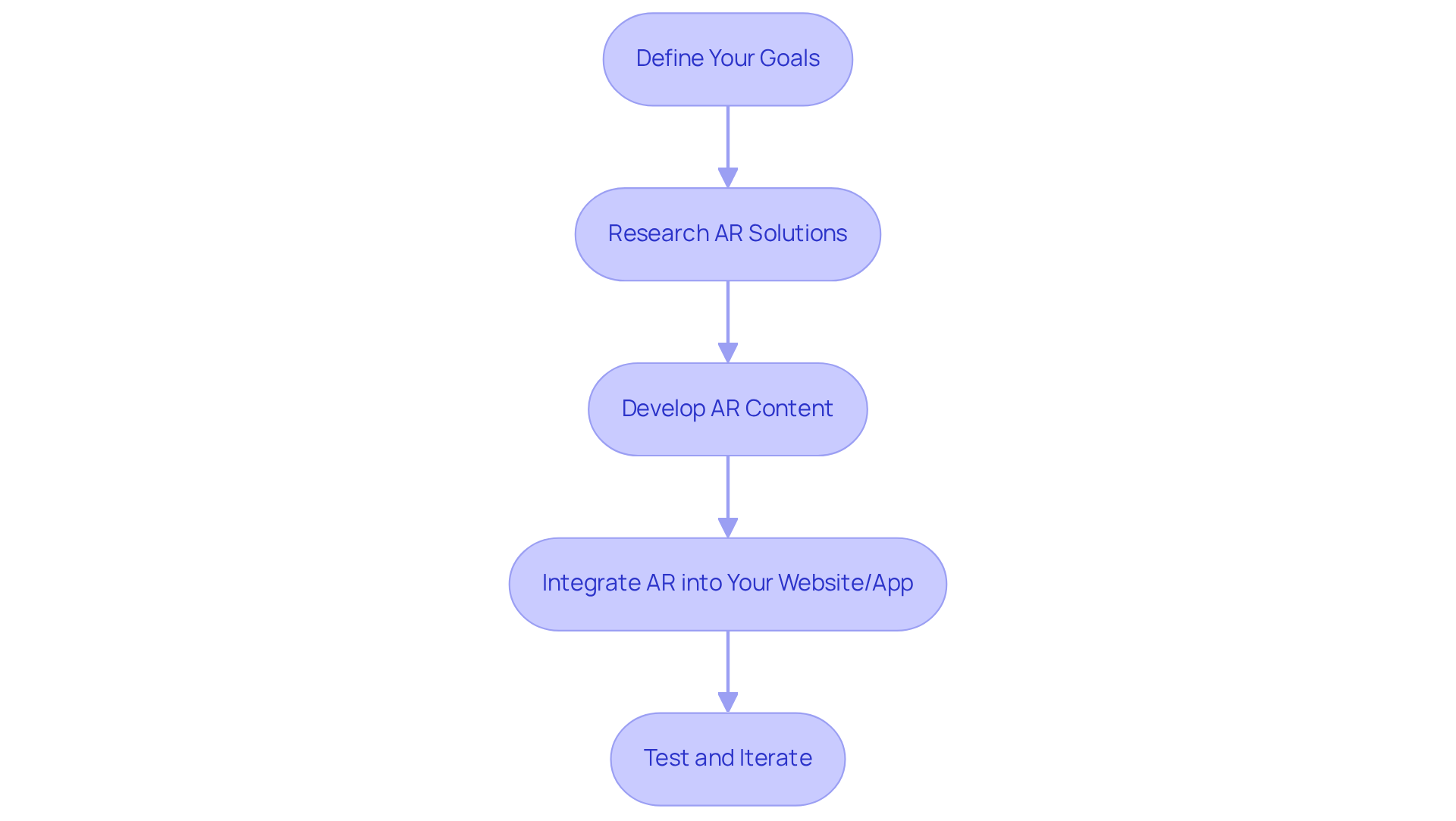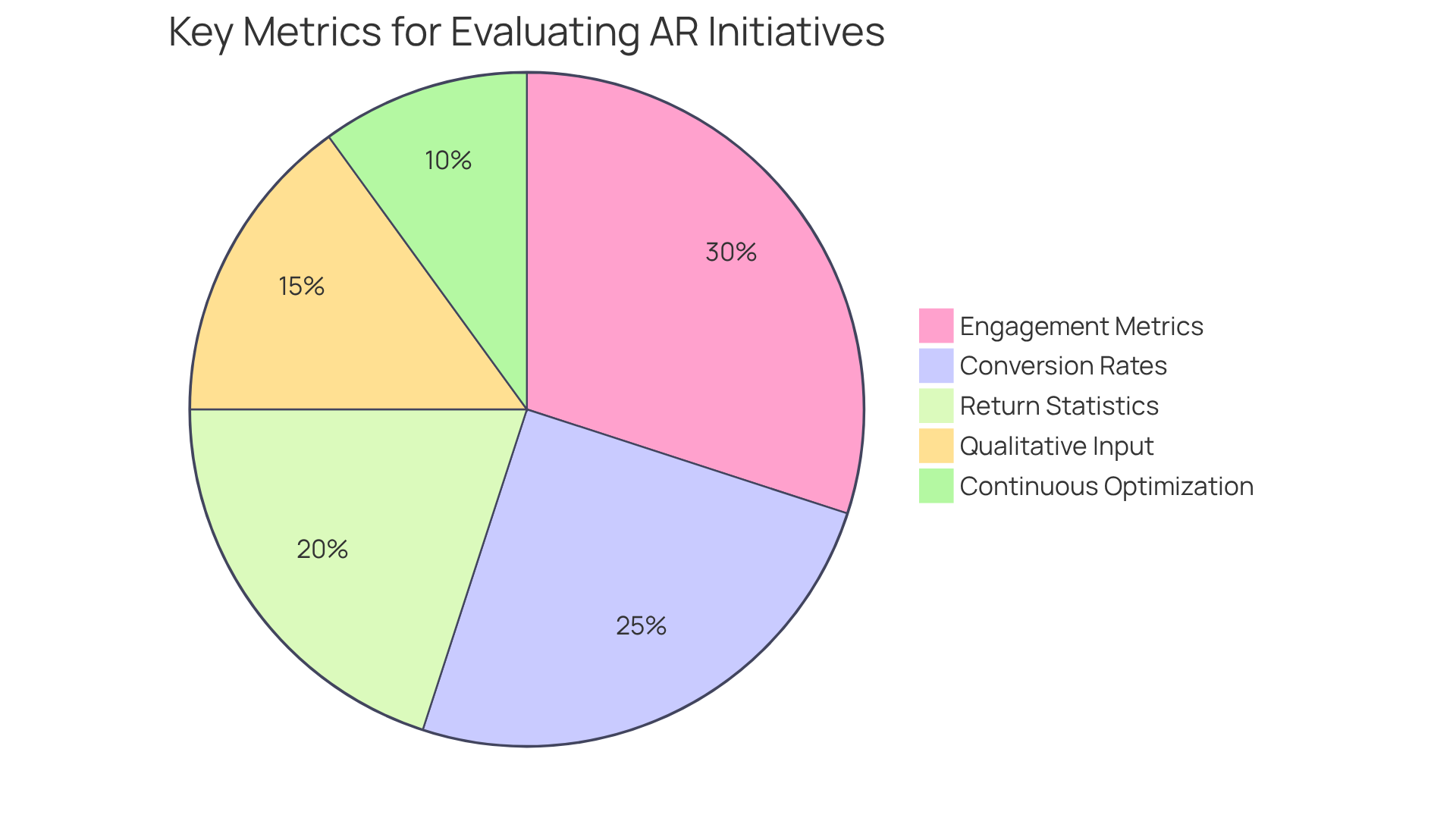Overview
Augmented Reality (AR) significantly enhances e-commerce engagement by allowing consumers to visualize products in their own environments prior to purchase. This capability not only boosts consumer confidence but also reduces return rates.
Research indicates that brands like IKEA and L’Oréal have successfully implemented AR, showcasing how it can create immersive experiences that foster emotional connections and drive sales. Such proven strategies make AR an essential tool for modern online retail.
As brand managers seek innovative solutions to enhance customer experience, collaboration in AR development can yield substantial benefits.
Introduction
Augmented Reality (AR) is revolutionizing the e-commerce landscape, fundamentally transforming how consumers interact with products prior to making a purchase. By enabling shoppers to visualize items within their own environments, AR not only enhances engagement but also instills confidence in buying decisions. This leads to higher conversion rates and significantly reduced return rates.
However, as brands race to adopt this cutting-edge technology, a critical challenge persists: how can they effectively implement AR strategies that resonate with consumers and foster loyalty?
Exploring the potential of AR in e-commerce unveils both exciting opportunities and essential considerations for brands striving to maintain a competitive edge in the market.
Understand Augmented Reality and Its Impact on E-Commerce
Augmented Reality (AR) illustrates how to use augmented reality as a groundbreaking technology that overlays digital information onto the real world, significantly enhancing interaction with the environment. In the e-commerce sector, understanding how to use augmented reality empowers shoppers to visualize products within their own spaces prior to purchase, effectively bridging the gap between online and in-store shopping experiences.
For example, IKEA's AR application shows users how to use augmented reality to see how furniture fits into their homes, enhancing the shopping journey while minimizing purchase uncertainty, which in turn boosts conversion rates. Research indicates that 70% of consumers feel more confident in their online shopping choices when they understand how to use augmented reality features.
By integrating AR, brands like Magic Playbox can foster engaging interactions that captivate clients, encouraging deeper involvement and ultimately driving sales and loyalty. Successful implementations, such as L’Oréal's interactive ads and the 19 Crimes wine campaign, illustrate AR's capacity to forge emotional connections and enhance customer engagement, leading to increased sales and brand loyalty.
As AR technology continues to evolve, learning how to use augmented reality in transforming online shopping interactions will grow increasingly vital, positioning it as an essential tool for brands aiming to innovate and connect with their audiences. Looking ahead, 2025 is poised to witness commerce focused on narratives, interactions, and connections that are both personal and unforgettable.

Identify Key Benefits of Augmented Reality for Your Brand
The integration of augmented reality (AR) in e-commerce offers significant advantages, especially in how to use augmented reality through the innovative solutions provided by Magic Playbox.
Enhanced customer engagement is driven by Magic Playbox's AR technology, which not only fosters interactive experiences that captivate users but also teaches them how to use augmented reality, encouraging them to spend more time on your site. Research indicates that 61% of consumers prefer retailers offering AR experiences, and those who engage with AR content spend an average of 75 seconds interacting with it—substantially increasing dwell time.
-
Lowered Return Rates: By showing individuals how to use augmented reality to visualize products in their own settings, Magic Playbox empowers informed buying choices. This capability addresses common concerns regarding fit and appearance, leading to a decrease in returns, which can reach as high as 27% when products do not meet expectations.
-
Enhanced conversion rates can occur as research shows that learning how to use augmented reality can boost conversion rates by up to 20%, as consumers gain confidence in their purchases through virtual try-ons and 3D product displays. Brands leveraging Magic Playbox's AR solutions have reported remarkable sales increases, with some experiencing boosts of up to 80% from integrating AR modules.
-
Enhanced Brand Loyalty: Engaging AR interactions crafted by Magic Playbox can cultivate a deeper emotional connection between consumers and brands, fostering loyalty. Nearly half of consumers indicate that AR content on packaging would enhance their loyalty to a brand, highlighting AR's potential to improve client retention.
-
Competitive Advantage: Adopting AR technology from Magic Playbox can teach brands how to use augmented reality to set themselves apart in a competitive market, attracting tech-savvy consumers seeking innovative shopping experiences. With AR in retail projected to reach $12 billion by 2025, brands that embrace this technology early can position themselves as leaders in engagement and customer experience.

Select and Develop Effective AR Applications for Your E-Commerce Platform
To successfully integrate augmented reality (AR) into your e-commerce platform, consider the following steps:
-
Define Your Goals: Clearly outline your objectives for using AR, such as enhancing customer interaction, increasing conversion numbers, or reducing return occurrences. Research indicates that products advertised with AR content have shown a 94% increase in conversion rates compared to those without.
-
Research AR Solutions: Investigate various AR tools and platforms that align with your goals. Popular choices include ARKit for iOS and ARCore for Android, which provide robust frameworks for creating immersive environments.
-
Develop AR Content: Create high-quality 3D models of your products to ensure a realistic and captivating interaction. Tools such as Blender and Unity excel at crafting intricate models that engage audiences. Brands utilizing AR for product visualization have reported up to 40% fewer returns, underscoring the significance of quality content.
-
Integrate AR into Your Website/App: Ensure that AR features are easily accessible and user-friendly. Provide straightforward guidance for clients on how to use augmented reality tools, as smooth integration can significantly enhance engagement and satisfaction.
-
Test and Iterate: Conduct thorough testing prior to launching your AR features to guarantee a seamless experience for users. Gather feedback and make necessary adjustments to enhance functionality. Ongoing iteration is critical, as retailers that effectively utilize AR can observe substantial increases in engagement and sales.
By following these steps, you can create a compelling AR experience that not only engages customers but also drives growth in your e-commerce business.

Measure Success and Optimize Your AR Strategy for Continuous Improvement
To effectively measure the success of your AR initiatives, it is essential to focus on key metrics that demonstrate their impact:
- Engagement Metrics: Monitoring the average interaction time with AR features, which typically averages around 75 seconds, is crucial. This metric not only measures audience interest but also assesses how to use augmented reality content effectively.
- Conversion Rates: Analyzing the percentage of users who complete a purchase after engaging with AR content reveals significant insights. Brands employing AR have reported conversion figures soaring by as much as 250% when 3D models are included, illustrating how to use augmented reality to significantly impact buying habits.
- Return Statistics: It is vital to monitor variations in return statistics before and after implementing AR solutions. For instance, retailers who understand how to use augmented reality for product visualization have experienced return rates plummeting to under 2%, compared to the typical 5-7%.
- Collecting qualitative input from individuals regarding how to use augmented reality in their interactions is indispensable. This can be achieved through direct conversations, surveys, or rating systems, providing valuable insights into customer satisfaction and areas for enhancement.
- Continuous Optimization: Leveraging the data collected is essential for refining your AR strategy. Experimenting with new features and content based on user interactions and feedback will enhance the overall user experience and demonstrate how to use augmented reality to drive sales. Regularly revisiting your metrics ensures that your AR initiatives remain effective and aligned with customer expectations.

Conclusion
Augmented Reality (AR) stands as a transformative technology in the e-commerce landscape, providing a distinctive avenue for consumers to interact with products prior to purchase. By adeptly bridging the divide between online and physical shopping experiences, AR empowers customers to visualize products within their own environments, significantly enhancing their confidence in purchasing decisions. This innovative approach elevates the shopping journey and positions brands to cultivate deeper connections with their audience.
Throughout this discussion, we have highlighted the key benefits of integrating AR into e-commerce, which include:
- Enhanced customer engagement
- Reduced return rates
- Improved conversion rates
- Increased brand loyalty
Brands such as IKEA and L’Oréal exemplify how AR can craft compelling shopping experiences that resonate emotionally with consumers. Moreover, the adoption of AR technology can provide retailers with a competitive edge, particularly as the demand for engaging online shopping experiences continues to escalate.
The implications of AR in e-commerce extend beyond immediate sales; they signify a shift towards a more interactive and personalized shopping landscape. As brands look to the future, embracing AR not only meets consumer expectations but also lays the groundwork for innovative storytelling and engagement strategies. By investing in AR technologies and consistently optimizing their applications, retailers can ensure they remain at the forefront of the evolving e-commerce landscape, ultimately shaping the future of online shopping.
Frequently Asked Questions
What is Augmented Reality (AR)?
Augmented Reality (AR) is a technology that overlays digital information onto the real world, enhancing interaction with the environment.
How does AR impact the e-commerce sector?
AR empowers shoppers to visualize products in their own spaces before purchase, effectively bridging the gap between online and in-store shopping experiences.
Can you provide an example of AR in e-commerce?
IKEA's AR application allows users to see how furniture fits into their homes, enhancing the shopping journey and minimizing purchase uncertainty.
What effect does AR have on consumer confidence in online shopping?
Research indicates that 70% of consumers feel more confident in their online shopping choices when they understand how to use AR features.
How can brands benefit from integrating AR?
Brands can foster engaging interactions that captivate clients, encouraging deeper involvement, which ultimately drives sales and customer loyalty.
What are some successful examples of AR implementation in marketing?
Successful implementations include L’Oréal's interactive ads and the 19 Crimes wine campaign, which enhance customer engagement and forge emotional connections.
Why is learning how to use AR important for brands?
As AR technology evolves, understanding how to use it in online shopping interactions will become vital for brands aiming to innovate and connect with their audiences.
What is the future outlook for AR in e-commerce?
By 2025, commerce is expected to focus on narratives, interactions, and connections that are both personal and unforgettable, highlighting the importance of AR.




